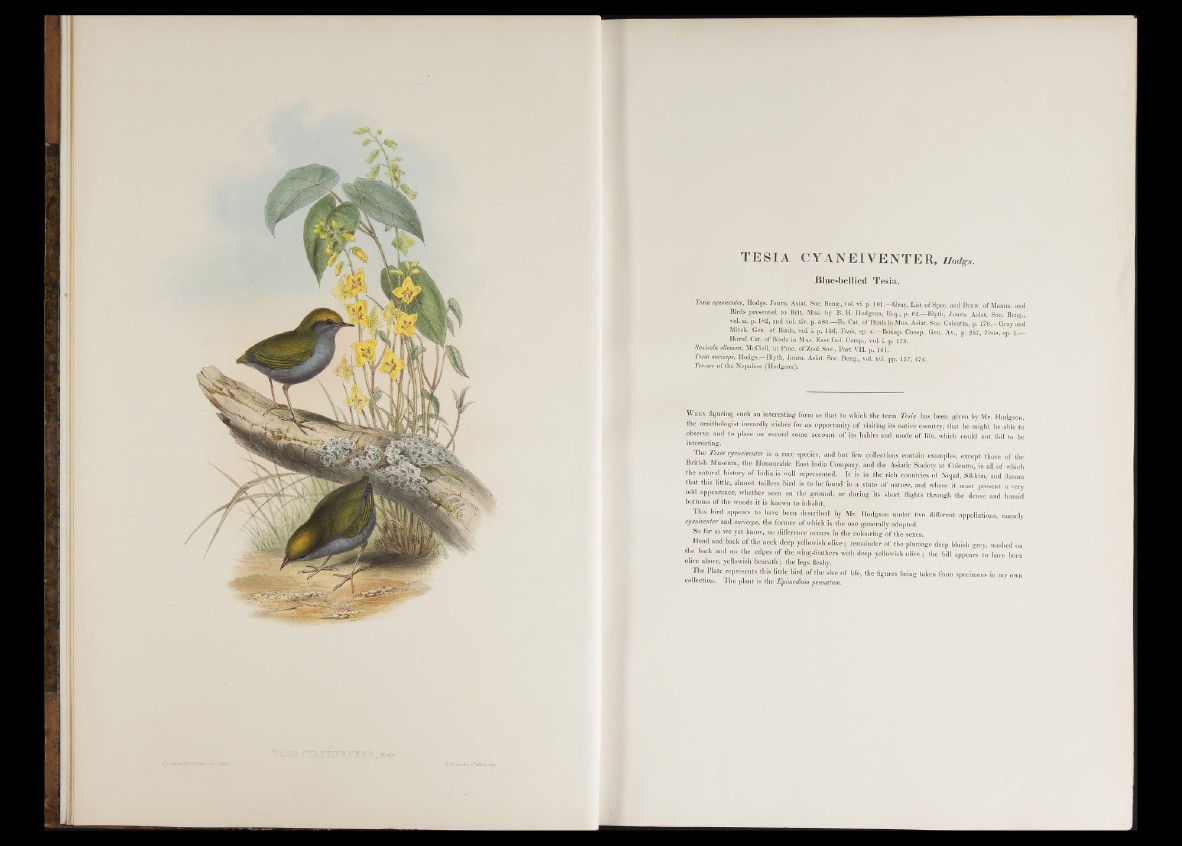
TESIA CYANEIVENTER, Hodgs.
Blue-bellied Tesia.
Tesia cyaniventer, Hodgs. Joum. Asiat. Soc. Beng., vol. vi. p. 101.—Gray, List of Spec, and Draw, of Mamm. and
Birds presented to Brit. Mus. by B. H. Hodgson, Esq., p. 62.—Blyth, Journ. Asiat. Soc. Beng., to1-|Sp- 182> and vol. xiv. p. 586.—Ib. Cat. of Birds inMms. Asiat. Soc. Calcutta, p. 178.—Gray and
Mitch. Gen. of Birds, vol. i. p. 156, Tesia, sp. 4.—Bonap. Consp. Gen. Av., p. 257, Tesia, sp._1 .__
Horsf. Cat. of Birds in Mus. East Ind. Comp., vol. i. p. 179.
Sawicola olivacea, McClell. in Proc. of Zool.Soc., Part VII. p. 161.
Tesia auriceps, Hodgs.—Blyth, Journ. Asiat. Soc. Beng., vol. xvi. pp. 137, 474.
Tee-see of the Nepalese (Hodgson).
When figuring; such an interesting form as that to which the term Tesia has been given by Mr. Hodgson,
the ornithologist inwardly wishes for an opportunity of visiting its native country, that he might be able to
observe and to place on record some account pf its habits and mode of life, which Could not fail to be
interesting.
The Tesia cyaneiventer is a rare species, and but few collections contain examples, except those of the
British Museum, the Honourable East India Company, and the Asiatic Society at Calcutta, in all of which
the natural history of India is well represented. I t is in the rich countries of Nepal, Sikkim, and Assam
that this little, almost tailless bird is to be found in a state of nature, and where it must present a very
odd appearance, whether seen on the ground, or duriDg its short flights through the dense and humid
bottoms of the woods i r i s known to inhabit.
This bird appears to have been described by Mr. Hodgson under two different appellations, namely
cyanmenter and auriceps, the former of which is the. one generally adopted.
So far as we yet know,, no difference occurs in the colouring o f the sexes.
Head and back of the neck deep yellowish olive; remainder of the plumage deep bluish grey, washed on
the hack and on the edges of the wing-feathers with deep yellowish olive ; the bill appears to have been
olive above, yellowish beneath; the legs fleshy.
The Plate represents this little bird o f the size of life, the figures being taken from specimens in my own
collection. The plant is the Epimedium pennatum.